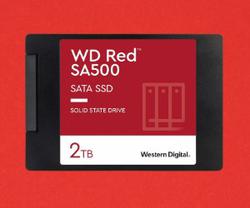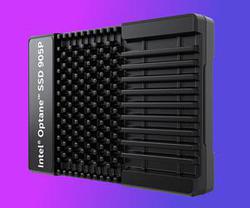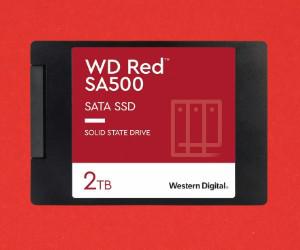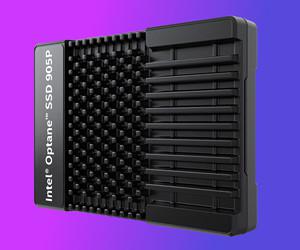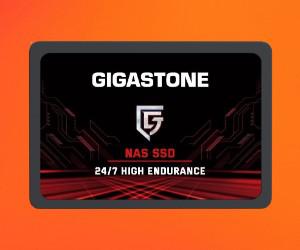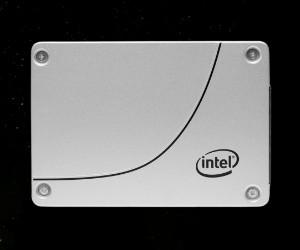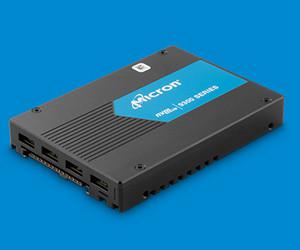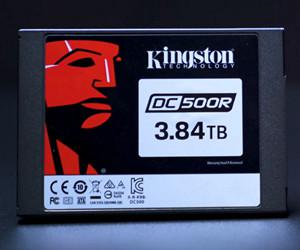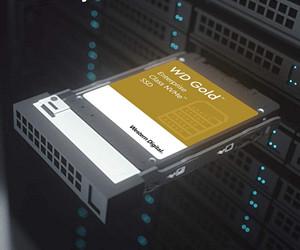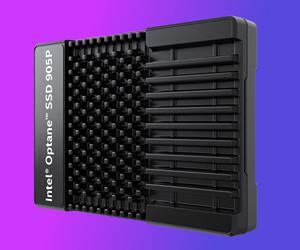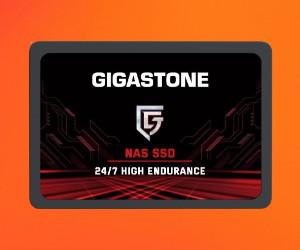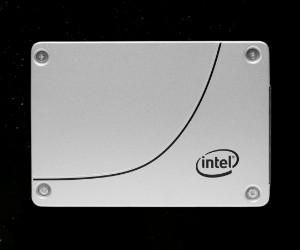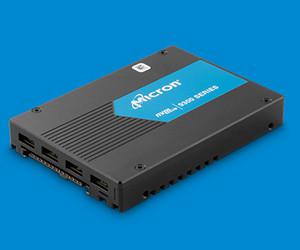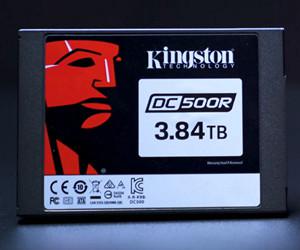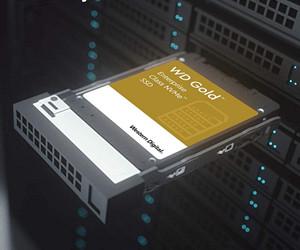Best SSD for Server Storage
In the days of HDDs, choosing a drive was simply a matter of capacity, RPM speed, and manufacturer. With SSDs, it is much more complicated, especially if it will be used in a server to process important data.
The wrong interface can become a bottleneck for the entire system, limiting the performance of your applications. And a model with a low endurance rating can fail after only a couple of months of use.
To save you time, we've studied the offerings on the market and compiled the best server SSDs in May 2024. In this guide, you'll also find out what features you should check for in the first place.
Table of contents:
- Best SSD for Server - Buyer's Guide
- Best SSDs for Server – TOP 7
- Best SSDs for Server: Comparison
- Western Digital Red SA500
- INTEL OPTANE SSD 905P
- Gigastone Enterprise NAS SSD
- Intel D3-S4510 SSD
- MICRON 9300 MAX
- KINGSTON DC500R
- WD GOLD SN600
- FAQ about Best SSD for Server
- Best SSD for Server: Conclusion
Best SSD for Server - Buyer's Guide
Based on our experience, when looking for the best SSD for a server, certain factors can have a significant impact on your overall experience. We'll take a closer look at what to look for before you buy.
How to choose a server SSD
We have already mentioned interfaces, endurance and performance in different scenarios. Now let's talk about it all in more detail. When choosing an SSD for a server, you should consider the following aspects:
Form Factor
The flash memory chips themselves don't take up much space, which allows SSDs to come in different shapes and sizes depending on user needs. The form factor determines the shape and size of the drive, and the most common ones are:
• 2.5" (or U.2)
2.5" or U.2 when it comes to NVMe, also known as small form factor (SFF). All drives are of standard length and width. The height ranges from 7 to 15mm depending on the capacity and cooling solution.
• Add-in card (AIC)
Add-in card (AIC), sometimes referred to as HHHL (half height, half length). An SSD as an add-in card is plugged directly into a PCIe slot on the motherboard. This connection utilizes more PCI Express lanes and the larger size of the AIC results in more efficient heat spreading. This increases maximum possible performance, but the drive is not hot-swappable.
• M.2
M.2 is a Kioxia Exceria Plus 1TB Review: Fast PCIe 3.0 x4, NVMe SSD for Gaming and Working Tasks, also used in server hardware. However, there are usually only one or two slots on the board. Small stick shaped drives can be used for operating system loading or caching.
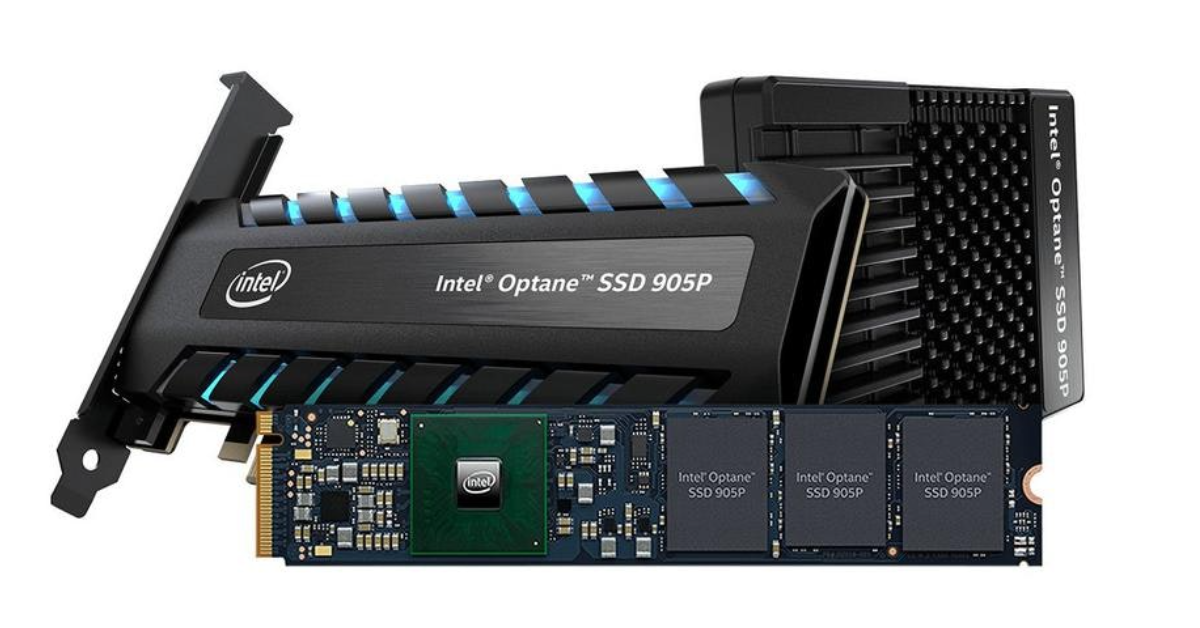
Interface
The interface or logical protocol determines how the SSD communicates with the CPU. Drives in different form factors can use the same interface, in servers are usually found:
• SATA
SATA is popular in the lower price segment. SATA SSDs typically have data transfer rates of less than 560 MB/s for sequential operations. The interface is the main performance limiter and the reason for the high latency, so more advanced technologies are used for demanding applications.
• SAS
SAS is the established standard for enterprise storage. The interface has gained popularity for its scalability and higher bandwidth. For example, 12Gb/s SAS provides up to 1GB/s on each of the two links. The dual port feature allows you to increase system fault tolerance by connecting one drive to two servers (if one of them fails, access to data will remain). But SAS drives require a special host bus adapter (HBA) or RAID controller. SAS interface can take a SATA drive, but not vice versa.
• NVMe
With an NVMe interface, the SSD is connected to the PCIe bus, which is either directly connected to the CPU or through the chipset. This significantly reduces latencies (up to a few microseconds), and data transfer speeds are limited by the characteristics of the memory itself.
When selecting an NVMe SSD, consider the supported version of the PCI Express standard. PCIe 3.0 provides up to 1 GB/s per lane or 4 GB/s for a "x4 Gen 3" slot. The next generation PCIe 4.0 doubles this speed.
Types of Flash Memory
SSDs write information on flash memory chips, also known as NAND. When SSDs first appeared, each cell could only hold one bit (0 or 1). SLC (Single-Level Cell) memory offered high data transfer rates, but low density and expensive manufacturing gave rise to other technologies. Sophisticated algorithms allow different levels of cell charge, which will correspond to a specific bit sequence. The downside of this approach is reduced durability. Each cell has a lifespan, and the more bits of information it stores, the more often it will be overwritten.
The following types of memory can be found in modern SSDs:
- MLC (Multi-Layer Cell). Each cell stores two bits of information. The advantage of MLC memory is high speed and reliability, but it is used less and less often because of high cost;
- TLC (Triple-Level Cell) is the most widely used type of memory. Compared to MLC it will have slower write speed and shorter lifespan. But TLC helped to make SSD more affordable;
- QLC (Quad-Level Cell) is just starting to conquer the market. Because of the low endurance QLC memory is only applicable for consumer SSDs so far.
Apart from that there are Intel Optane drives with 3D XPoint memory. They use a crosspoint structure to address individual cells which in turn store only one bit of data. Advantages of the technology include speed (although faster NVMe SSDs have already appeared) and endurance. However, the high prices are still a big concern.
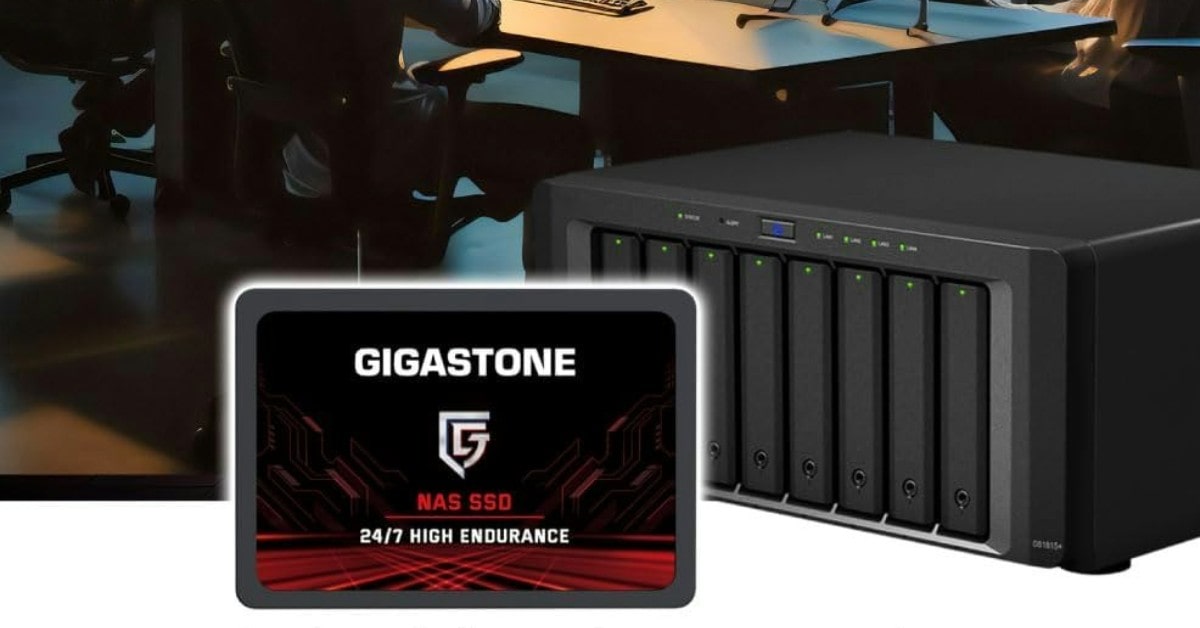
Performance
Real-world scenarios involve mixed loads, so benchmarks will not give you the overall picture. However, the performance of a drive is typically measured by the following metrics:
• IOPS
IOPS - the number of input/output operations (I/O) an SSD can handle in one second. This is stated in relation to the data block size (usually 4 KB), separately for read and write operations. Enterprise class drive manufacturers sometimes quote mixed IOPS (70/30 read/write).
• Throughput
Sequential read and write throughput of an SSD. Measured in megabytes per second (MB/s) or gigabytes per second (GB/s).
• Latency
Latency is the time interval between sending a request by a running application and receiving a response, whether it is a write confirmation or read data. Latency is measured in microseconds, and grows as the queue depth (i.e. the number of simultaneous requests) increases.
• Quality of Service (QoS)
Quality of Service (QoS) reflects the stability and predictability of drive latency. It must meet a specified level of service (99.9%, 99.99%, or 99.999%). For example, if the latency with 99.999% quality of service is 20 ms, then 99.999% of the I/O operations will complete in 20 ms or less.
Endurance and power fails protection
The expected life of a drive is expressed in Drive Writes per Day (DWPD) or Terabytes Written (TBW). This is the amount of data the device is guaranteed to write before it fails. You can calculate one from the other. For example:
TBW = DWPD * Warranty in years * 365 * Capacity in TB
It is quite possible that a high-capacity drive with a lower DWPD can write more data. You can also extend the life of the drive by increasing the overprovisioning area (if possible) to have more spare memory cells to replace those that are worn out. In any case, an ordinary consumer-grade SSD has a relatively low endurance rating. For servers, it is recommended to use the best enterprise SSD that fits your budget.
Another advantage of specialized SSDs is protection against power loss. For this purpose, additional capacitors are installed on the board, the charge in which is enough to carry out all unfinished write operations.
It is noteworthy that the consumer series Intel Optane 905P has no capacitors, but we still decided to add it to the list. Since the new generation drive does not use DRAM caching (write confirmation is sent when the data is already in memory), the risk of failure is extremely low. Although if the budget allows, you can choose Optane products for data centers with "Enhanced power-loss data protection" for more reliability.
Best SSDs for Server – TOP 7
Discover our list of the best SSDs for servers that offer unmatched performance, durability, and unique features.
- Capacities: 500GB - 4TB; Form Factor: 2.5 Inches
- Sequential Read/Write (Up to): 560/560 MB/s
- Interface: sata 6 0 gb
- Capacities: 380GB - 1.5TB; Form Factor: M.2, U.2, AIC
- Sequential Read/Write (Up to): 2600 / 2200 MB/s
- Interface: PCIe Gen 3.1 x4; Endurance (DWPD): 10
- Capacities: 128GB - 2TB;
- Form Factor: 2.5 Inches
- Sequential Read/Write (Up to): 560/560 MB/s
- Capacities: 1.92TB; Form Factor: 2.5"
- Sequential Read/Write (Up to): 510 / 560 MB/s
- Interface: ATA-4, sata 6 0 gb
- Capacities: 3.2TB - 12.8TB; Form Factor: U.2
- Sequential Read/Write (Up to): 3500 / 3500 MB/s
- Interface: PCIe 3.0 x4; Endurance (DWPD): 1
- Capacities: 480GB - 7.68TB; Form Factor: 2.5"
- Sequential Read/Write (Up to): 555 / 525 MB/s
- Interface: SATA 3 (6Gb/s); Endurance (DWPD): 0.5
- Capacities: 960GB - 7.86TB; Form Factor U.2
- Sequential Read/Write (Up to): 3100 / 1800 MB/S
- Interface: PCIE 3.1 X4 / NVME; Endurance (DWPD): 0.8
Best SSDs for Server: Comparison
Dive deeper into the technicalities, pros, cons, and unique features of these best ssd's for server
| SSD Model | Capacities (Available Sizes) | Interface/Protocol | Sequential Read / Write Speed (Up to) |
|---|---|---|---|
| Western Digital Red SA500 | 500GB - 4TB | SATA 6 0 gb | 560/560 MB/s |
| Intel Optane SSD 905P | 380GB, 960GB, 1.5TB | PCIe NVMe 3.0 x4 | 2,600/2,200 MB/s |
| Gigastone Enterprise | 128GB - 2TB | SATA 6 0 gb | 560/560 MB/s |
| Intel D3-S4510 SSD | 1.92TB | SATA 6 0 gb | 510 / 560 MB/s |
| Micron 9300 Max | 3.2TB, 6.4TB, 12.8TB | PCIe NVMe 3.0 x4 | 3,500/3,500 MB/s |
| Kingston DC500R | 480GB, 960GB, 1.92TB, 3.84TB | SATA III 6Gb/s | 555/525 MB/s |
| WD Gold SN600 | 960GB, 1.92TB, 3.84TB, 7.68TB | PCIe NVMe 3.0 x4 | 3,100/2,000 MB/s |
Western Digital Red SA500 SSD for Server
Editor's Choice
The Western Digital Red SA500 is an exceptional choice for those seeking storage optimized for caching in NAS systems. It's designed to provide rapid access to frequently used files, making it perfect for both home and business users. With superior endurance, this SSD can handle the heavy read and write loads demanded by NAS environments, ensuring reliability around the clock. The drive is purpose-built for NAS and utilizes Western Digital's proven 3D NAND technology to deliver maximum SATA performance.
Additionally, it reduces latency and improves responsiveness for a variety of applications, including OLTP databases, multi-user environments, photo rendering, and editing 4K and 8K video. Overall, the Western Digital Red SA500 is a top-notch choice for enhancing your NAS system's performance and reliability.
Pros:
- Optimized for NAS Caching
- Superior Endurance
- Proven 3D NAND Technology
- Improved Responsiveness
Cons:
- Limited to SATA Performance
Summary: The Western Digital Red SA500 is a NAS-optimized SSD that offers rapid access to frequently used files, superior endurance for 24/7 reliability, and maximum SATA performance thanks to Western Digital's proven 3D NAND technology. It is designed to improve responsiveness in various applications, including databases, multi-user environments, and video editing. However, it may be limited by SATA speeds, potentially have compatibility issues with some NAS systems, carry a price premium, and have limited storage capacity options.
- Capacities: 500GB - 4TB; Form Factor: 2.5 Inches
- Sequential Read/Write (Up to): 560/560 MB/s
- Interface: sata 6 0 gb
Intel Optane SSD 905P for Server Storage
Best Overall
Intel Optane SSDs with 3D XPoint technology are remarkably durable. They can write tens of petabytes of data throughout their lifespan. By comparison, most typical SSDs have a lifespan measured in terabytes. Furthermore, Optane devices are exceptionally good at handling random memory requests, producing up to 575,000/550000 IOPS for reads and writes.
The Optane SSD 905P delivers high quality of service and remains responsive during concurrent I/O operations. If you run write-heavy workloads, this is an excellent choice. The series consists of three form factors (add-in card, U.2, and M.2), though storage capacity options are limited.
Intel also has a separate Optane range for data centers with even higher DWPD and enhanced power loss protection, but they cost significantly more.
Pros:
- Best in class random read and write performance
- Outstanding endurance rating
- Available in multiple form factors
Cons:
- Low storage capacities
Summary: Intel Optane SSDs with 3D XPoint technology offer remarkable durability, capable of writing tens of petabytes of data, and excel in handling random memory requests with up to 575,000/550,000 IOPS for reads and writes. The Optane SSD 905P is ideal for write-heavy workloads, providing high quality of service and responsiveness. It is available in three form factors but with limited storage capacity options.
- Capacities: 380GB - 1.5TB; Form Factor: M.2, U.2, AIC
- Sequential Read/Write (Up to): 2600 / 2200 MB/s
- Interface: PCIe Gen 3.1 x4; Endurance (DWPD): 10
Gigastone Enterprise NAS SSD for Server Storage
People's Choice
The Gigastone Enterprise NAS SSD is a top choice for those looking for reliable and high-performance storage for their NAS systems. It's designed for 24/7 operation and offers read speeds of 560 MB/s and write speeds of 530 MB/s, making it ideal for extreme workloads. This SSD is well-suited for heavy workloads such as virtualization, collaborative editing, photo rendering, and 4K/8K video editing, ensuring maximum performance, productivity, and efficiency in both home and office environments.
One of the key strengths of this SSD is its wide compatibility. It offers high endurance and secure data consolidation for NAS RAID business servers or home lab setups, with verified compatibility on popular NAS models from Synology, QNAP, Asustor, and more. This makes it a versatile option for various setups.
The Gigastone Enterprise NAS SSD also boasts advanced technology, featuring 3D NAND with SLC cache that delivers high-speed performance and ensures product longevity. Its 2.5" (7mm) SATA III form factor makes it suitable for NAS business servers, PS4, laptops, PCs, and RAID configurations.
Pros:
- Enterprise Grade
- High Performance
- Wide Compatibility
- Advanced Technologyr
- Suitable for NAS business servers, PS4, laptops, PCs, and supports RAID configurations.
Cons:
- Depending on the available models, there may be limitations in storage capacity choices
- While it offers high performance for a SATA drive, it may not match the speed of NVMe SSDs
Summary: The Gigastone Enterprise NAS SSD is a reliable and efficient choice for those seeking a high-quality storage solution for their NAS systems, offering robust performance and compatibility across a range of applications and devices.
- Capacities: 128GB - 2TB
- Form Factor: 2.5 Inches
- Sequential Read/Write (Up to): 560/560 MB/s
Intel D3-S4510 SSD for Server
Best SATA SSD
The Intel D3-S4510 SSD is a solid choice for enterprise server applications, offering a blend of performance, reliability, and capacity. With a form factor of 2.5 inches and a capacity of 1.92TB, it provides ample storage for a wide range of server needs. The SSD features a SATA3 interface and utilizes TLC NAND flash, ensuring compatibility with a variety of server and array setups that accept 2.5” 7mm SATA drives.
Performance-wise, the D3-S4510 delivers with low latency (36 µs read, 37 µs write) and respectable IOPS (97,000 random read, 35,500 random write). The sequential read and write speeds are up to 560 MB/s and 510 MB/s, respectively, making it suitable for handling large data transfers efficiently.
The SSD is designed to withstand the rigors of enterprise environments, with a 2 million hour MTBF (Mean Time Between Failures) and robust shock and vibration resistance (operating: 1000G @ 0.5ms, non-operating: 1000G @ 0.5ms). Power consumption is reasonable, with active use at 3.2W and idle at 1.1W, contributing to overall energy efficiency.
Pros:
- High Capacity
- Low Latency and Good Performance
- Reasonable power consumption with 3.2W active and 1.1W idle
- Fits well in servers and arrays that accept 2.5” 7mm SATA drives
Cons:
- While reliable, the SATA3 interface may not offer the same speed as NVMe SSDs, which could be a limiting factor for some high-performance applications
Summary: The Intel D3-S4510 SSD is a reliable and capable option for enterprise servers, offering good performance, durability, and a generous storage capacity. Its compatibility with standard server setups makes it a versatile choice for various enterprise applications.
- Capacities: 1.92TB; Form Factor: 2.5"
- Sequential Read/Write (Up to): 510 / 560 MB/s
- Interface: ATA-4, sata 6 0 gb
Micron 9300 Max SSD for Server
Premium Choice
The Micron 9300 family is represented by the Pro and Max versions. They are based on the same hardware, but the Max version has more space reserved for overprovisioning. This gave higher random write speeds. The Micron 9300 Max provides unmatched performance at high queue depths, topping its closest competitors.
Sequential read and write speeds of up to 3500 MB/s can be achieved, near the four-lane PCIe 3.0 limit. The drive delivers a full enterprise feature set. For more efficient use of the storage, administrators can define up to 32 namespaces. With that, a single device will appear as multiple logical SSDs, allowing for more parallel sessions. The drives are designed to write from 18.6 to 74.7 petabytes of data.
Pros:
- Versatile and works well for almost any type of server
- Multiple namespaces support
- High capacities of up to 15.36TB
Cons:
- High power consumption (which is actually usual for the large capacity drives)
Summary: The 9300 Max model offers unmatched performance at high queue depths. It can achieve sequential read and write speeds of up to 3,500MB/s, which is nearly the speed limit of a quad-lane PCIe 3.0 interface. The drive comes with a full suite of enterprise features, including the ability to define up to 32 namespaces, allowing a single device to function as multiple logical SSDs for more parallel sessions. The drives are designed to write data with capacities ranging from 18.6 to 74.7 petabytes.
- Capacities: 3.2TB - 12.8TB; Form Factor: U.2
- Sequential Read/Write (Up to): 3500 / 3500 MB/s
- Interface: PCIe 3.0 x4; Endurance (DWPD): 1
Kingston DC500R Server SSD
Best Budget
The Kingston DC500R is designed for read-centric applications, as indicated by the "R" in the name. It is the most affordable model of the range, which is equipped with capacitors for protection against accidental power loss. Thus, the risk of data loss is significantly reduced.
The SATA interface limits the maximum read and write speeds however the DC500R is compatible with most existing server platforms. The metal casing helps dissipate heat, preventing the controller from overheating. The Kingston SSD Manager utility lets you not only monitor the health of the drive, but also configure the over-provisioning area.
By slightly reducing the space available to the user, administrators can improve the performance and increase the lifespan of the drive. If your server needs to handle a lot of write operations, it is worth paying attention to the top-of-the-line Kingston DC500M with a DWPD rating of 1.3.
Pros:
- Good performance for the price
- Very competitive cost per gigabyte
- Available at high capacities
Cons:
- Latencies under load are higher than desirable
Summary: The Kingston DC500R is a read-centric SSD designed for affordability and reliability, with capacitors for power loss protection to reduce the risk of data loss. Its SATA interface limits read and write speeds, but it is compatible with most server platforms. The metal casing aids in heat dissipation, while the Kingston SSD Manager utility allows for health monitoring and over-provisioning configuration to enhance performance and lifespan. For servers with heavy write operations, the higher-end Kingston DC500M with a DWPD rating of 1.3 is recommended.
- Capacities: 480GB - 7.68TB; Form Factor: 2.5"
- Sequential Read/Write (Up to): 555 / 525 MB/s
- Interface: SATA 3 (6Gb/s); Endurance (DWPD): 0.5
WD Gold SN600 SSD for Server
Best Alternative
Thanks to high data transfer speeds, NVMe SSDs are used in servers more and more. The WD Gold SN600 can read at up to 3,100 MB/s and write at 2,000 MB/s. While actual numbers vary by capacity, even the base model will be at least twice as fast as a SATA drive.
This series is actually a rebranding of the Ultrastar DC SN640 product line. The new SSDs use the same technology and the 96-layer BICS4 3D TLC NAND flash memory. The drive has power loss protection and supports secure data erase. Considering the 0.8 DWPD endurance, the SN600 will not be suitable for extreme write-intensive applications like cache storage.
However, it is a great option for mixed and read-centric workloads.
Pros:
- High data transfer speeds
- Great price to performance ratio
- Advanced security features
Cons:
- Higher than average idle power consumption
Summary: NVMe SSDs, like the WD Gold SN600, are increasingly used in servers due to their high data transfer speeds, with read speeds up to 3,100 MB/s and write speeds up to 2,000 MB/s. The SN600 series, a rebranding of the Ultrastar DC SN640, utilizes 96-layer BICS4 3D TLC NAND flash memory and offers features such as power loss protection and secure data erase. However, with a 0.8 DWPD endurance, it's not suitable for extremely write-intensive applications like cache storage.
- Capacities: 960GB - 7.86TB; Form Factor: U.2
- Sequential Read/Write (Up to): 3100 / 1800 MB/s
- Interface: PCIe 3.1 x4 / NVMe; Endurance (DWPD): 0.8
FAQ about Best SSD for Server
Here are some common questions that many people ask when they are considering buying the best ssd for server .
What are SSDs and why are they used in servers?
SSDs or Solid State Drives are data storage devices that use NAND-based flash memory to store data. Unlike traditional hard drives (HDDs), they have no moving parts, which makes them faster, more energy-efficient, and more reliable, especially suitable for servers where performance and reliability are critical.
What makes an SSD suitable for server use?
Server-grade SSDs are designed for constant uptime and high-intensity workloads. They typically have features like enterprise-level endurance, higher storage capacities, better performance, enhanced reliability, and sometimes even dual ports for failover.
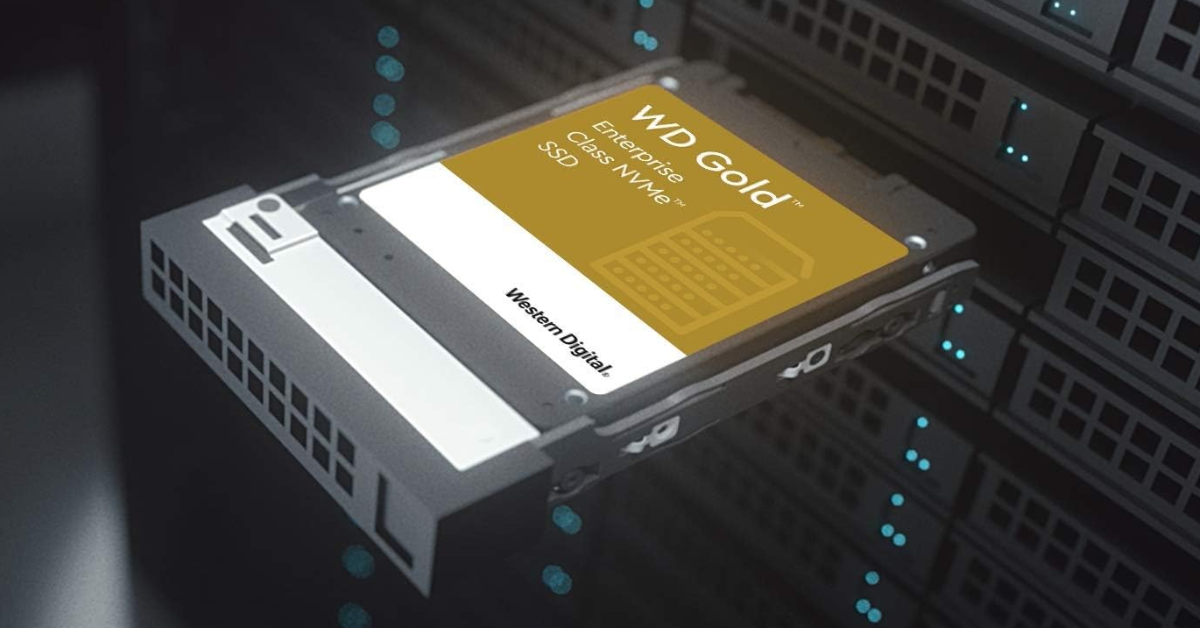
What are the key factors to consider when choosing an SSD for a server?
Key factors include storage capacity, performance (read/write speeds), endurance (Drive Writes Per Day - DWPD), reliability, warranty, and price.
What is the difference between enterprise SSDs and consumer SSDs? Can I use consumer SSDs in my server?
Enterprise SSDs are built for continuous operation, greater reliability, and often come with features like power-loss protection.
While consumer SSDs can be used in servers, they may not provide the same level of performance and durability. It is typically advised to go with enterprise-class SSDs for server applications.
What interface should I choose for my server SSD? SATA, NVMe, or SAS?
The choice between SATA, NVMe, or SAS depends on your specific requirements. SATA is common and cost-effective, NVMe offers higher performance, and SAS is known for reliability and is often used in enterprise environments.
Best SSD for Server: Conclusion
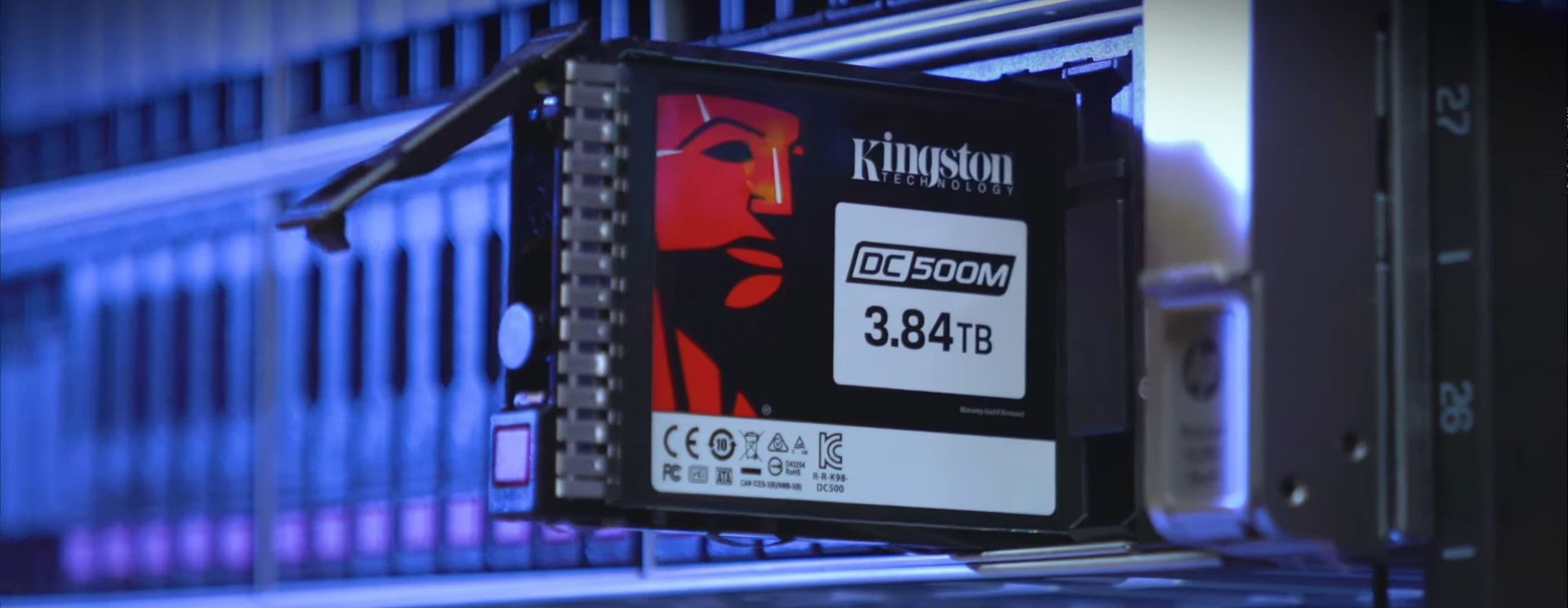
Choosing the best SSD for your server is a critical decision that can have a significant impact on the performance, reliability, and efficiency of your entire system. We've reviewed the best in our opinion, such as the Western Digital Red SA500 or WD Gold SN600, Intel Optane SSD 905P and others. All you have to do is read and choose which one is right for your needs.
Investing in the right server-class SSD isn't just about optimizing your current operations; it's about protecting your system for the future, ensuring it can handle growing workloads, and creating a solid foundation for the ongoing success of your business or project. Thank you for reading us!
Go Deeper:
